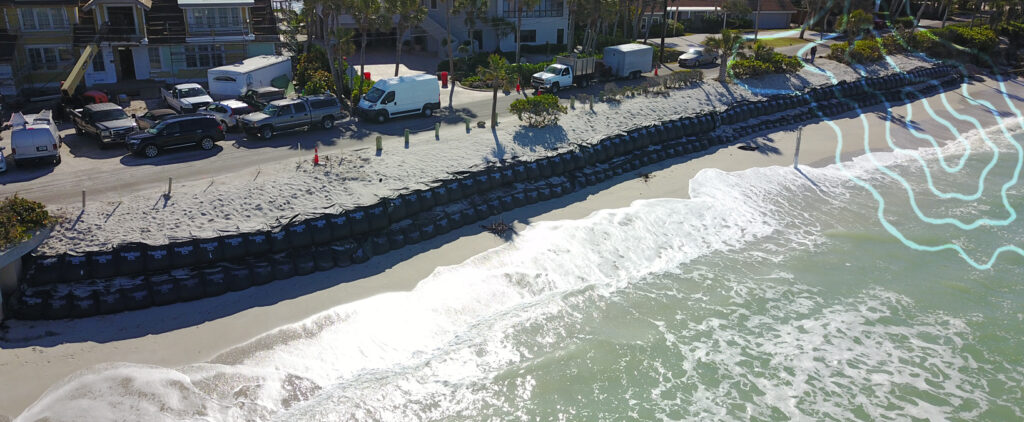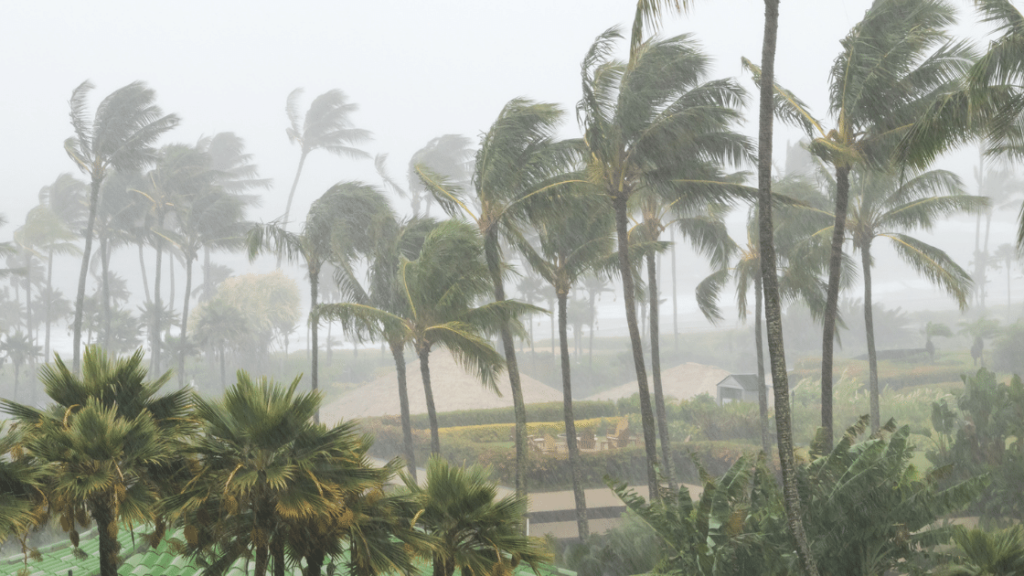North & South Carolina Hurricane Protection Solutions
Carolina hurricanes can come swiftly & brutally. Prepare as much as you can so you and your family’s lives and property are protected.

Within the past 150 years, there have been over 55 North Carolina hurricanes, and around 30 have reached land in South Carolina. Apart from that, tropical storms are a near-constant occurrence, with one appearing at least every two years.
With all of this happening, it’s crucial that you get yourself as many hurricane protection solutions as possible. Hurricanes can come swiftly and brutally, so you should prepare as much as you can so you and your family’s lives and property are protected.
At TrapBag, we specialize in providing hurricane protection solutions to ensure that your family and home suffer as little damage as possible during hurricane season.
All this talk of hurricanes may be new to you, so we’ll start by answering some of your questions. Does North Carolina get hurricanes? Does South Carolina get hurricanes? Let’s find out!
Do North and South Carolina Get Hurricanes?

Yes, they do. The Carolinas are some of the hottest spots for hurricanes. They’ve had several within the 21st century. Hurricanes have cost these two states billions of dollars in property loss and hundreds of lives.
North Carolina Hurricanes: Does North Carolina Have Hurricanes?
How many hurricanes have hit North Carolina?
North Carolina has one of the highest hurricane counts in the United States, at 57 hurricanes to date. Seventeen of those have been major storms between Category 3 and 5.
This state has lost billions in property, not just to hurricanes but also to tropical storms. North Carolina residents have suffered through over 400 storms.
When Is Hurricane Season in North Carolina?
Hurricane season starts in June and ends in November. Every year, there’s a big chance that you’ll have to brace yourself for the destruction that hurricanes bring.
How Far Inland DoHurricanes Go in North Carolina?
While it is possible to dodge a hurricane by living inland, you’ll have to go pretty deep. In 1989, Hurricane Hugo brought winds that were nearly a hundred miles per hour. So, if you want to protect yourself from a North Carolina hurricane, it is a good idea to move further inland. But you’ll have to move pretty far, which means a long distance from the beach.
South Carolina Hurricanes
South Carolina has suffered far fewer natural disasters than its sister state. However, this state hasn’t had it easy either. There have been over 30 hurricanes in South Carolina, five of which could be called significant. Because it’s a little farther off most hurricanes’ paths, it does have fewer scars.
However, this doesn’t mean that it’s completely safe. Since the science required to detect hurricanes isn’t infallible, sometimes meteorologists can’t detect hurricanes until they’re as close as two days away. This doesn’t give you a lot of time to make proper hurricane protection preparations.
When Is Hurricane Season in South Carolina?
South Carolina’s hurricane season also starts in June and ends in November. The most hurricane-prone months are August and September. Also, South Carolina is prone to tropical storms. So even if there aren’t any hurricanes, you may have to go through a tropical storm or two.
Depending on how big a tropical storm gets, it can suddenly become a hurricane.
How Far Inland Do Hurricanes Go in South Carolina?
South Carolina is very hurricane-prone as well so, you need to be prepared to move inland if one sweeps by. However, they do have much less storm activity than North Carolina, so you may not need to move too deep inland.
A maximum distance of 50 miles inland should take you out of the most affected areas and into relative safety. Of course, hurricane protection solutions will do the same and require less panicked movement.
Hurricane Protection Solutions

To ensure you and your family’s safety, we offer hurricane protection solutions in North and South Carolina. Here are our services:
Hurricane House Protection
Our protection against hurricanes uses hurricane barriers. Hurricane barriers are water barricades used to protect your home and property from the inevitable land changes that come with a hurricane. A hurricane barrier can also be known as a surge or flood barrier or even a storm surge barrier. They’re not only valid for hurricanes but also prevent damage to property during terrible tropical storms.
Storm barriers help prevent flooding and damage to property by blocking the waves or diminishing their force. You can liken it to a guard that faces the winds and waves. Because they’re there, helping to slow, redirect or stop the waves, your home is safe.
Hurricane barriers can be set up in two ways. They can be placed around a particular building, home, or property, or they can be placed around a body of water. When we’re talking about forming a hurricane barrier within North or South Carolina, we don’t mean setting up a barrier against the Atlantic Ocean.
Our bags are much more effective than traditional sandbags. They use less material but can take up a more significant space which means that you spend less.
They’re also made sturdy. Once in place, they’re shaped to stand against the waves and wind.
Here are some other ways that you can use other hurricane protection materials that can help you stay safe this season:
- Storm Shutters: Storm shutters are boards placed over your glass windows and screens to protect them from flying objects caused by storm winds. Storm shutters are also known as hurricane shutters and are used to guard against the destruction of your home by flying debris. There are many different types of storm shutters, and some can be made so that they’re both stylish and practical.
- Impact Glass: Hurricane glass, also known as safety glass, is a hurricane protection material made out of tempered laminated glass. It’s tough to break. It’ll protect your house against all sorts of flying debris.
- Control Barrier: You can use specially designed bags as a control barrier, protecting floodwaters from swarming your property.
- Securing Your Doors, Windows, and Roofing: Ensure your doors, roof, and windows are in good condition before hurricane season.
- Create an Emergency Plan: Map out an emergency evacuation route that’ll take you at least 100 miles inland. Ensure that you have enough food and water stored. You’ll also need supplies like medicine, face masks, cleaning supplies, clothes, torchlights, cash, chargers, etc. Upload your important documents to safe storage or the cloud.
And finally, make sure your loved ones understand your plan and know all escape routes and shelters.
Hurricane season doesn’t have to be nerve-wracking if you’re prepared. At TrapBag, we have the experience and materials to ensure that your home and property stay secure till the storm passes. [/vc_column_text][/vc_column][/vc_row]
Get the Dirt Before the Flood Hits
Stay ahead of flooding, erosion, and disaster response challenges. The Dirt, TrapBag’s monthly newsletter, delivers field-tested tips, real-world case studies, and the latest in barrier technology straight to your inbox.
